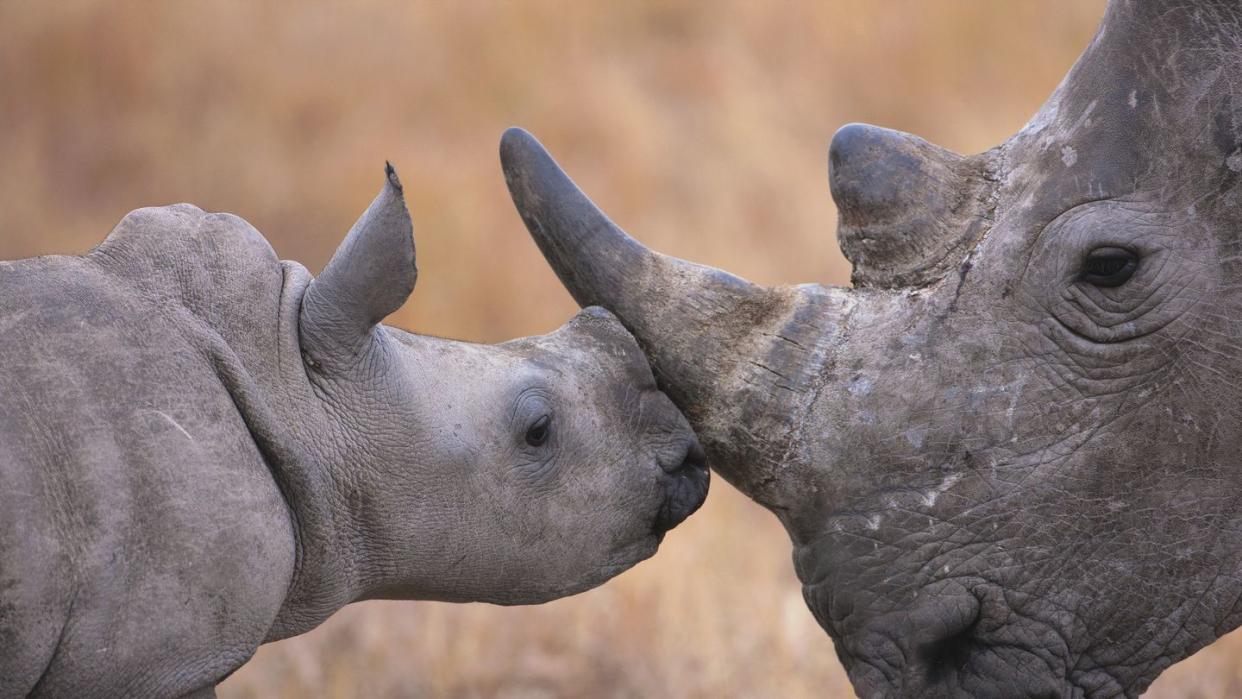The Key to Saving Rhinos? Making Their Horns Radioactive.

Scientists have inserted low doses of radioisotopes into the horns of 20 live rhinoceroses as part of a testing phase to help save rhinos from poaching.
The belief is that the technology will set off radiation detection monitors at borders, a more reliable way to catch smugglers.
If the research project shows that no harm comes to the rhinos, the team believes that expanding the project will allow them to save the lives of rhinos and other animals poached for their horns.
A little radioactivity shouldn’t hurt a rhinoceros, but it could catch a smuggler. At least, that’s the current plan,
It’s part of a project led by the University of the Witwatersrand’s Radiation and Health Physics Unit. The group has already inserted small amounts of radioactive isotopes into the horns of 20 live animals to monitor how the rhinos react. If the dose of nuclear technology in the horns prove not to harm the animals, the Rhisotope Project (as its cleverly named) hopes to expand and help save the rhino from poaching.
“Every 20 hours in South Africa a rhino dies for its horn,” James Larkin, University of the Wit professor, said in a news release. “These poached horns are then trafficked across the world and used for traditional medicines, or as status symbols. This has led to their horns currently being the most valuable false commodity in the black-market trade, with a higher value even than gold, platinum, diamonds, and cocaine.”
The rhino poaching issue has only grown over time. Since 2008, close to 10,000 rhinos have been lost to poaching in South Africa, and just last year, 499 were known poached. Wildlife trafficking being the third largest organized crime globally, and the team from University of the Wit said rhino poaching specifically has reached crisis levels.
Stopping that trade further down the poaching line may be one way to help save the animals from being killed in the first place. The project wants to piggyback off of the existing sophisticated nuclear security infrastructure across the world, which features over 11,000 radiation detection portal monitors at airports, harbors, and other borders or ports of entry.
“Sadly, rhino horns play a large role in funding a wide variety of criminal activities globally,” Larkin said. “Ultimately, the aim is to try to devalue rhinoceros’ horn in the eyes of the end users, while at the same time making the horns easier to detect as they are being smuggled across borders.”
Following a three-year development project that partnered the university professors with experts in multiple fields, the test has now entered the real world. The 20 rhinos were sedated, and the team drilled a small hole into each of their horns to insert the radioisotopes. The rhinos were then released, and will be monitored constantly for the next six months.
“Over months of research and testing, we have also ensured that the inserted radioisotopes hold no health or any other risk for the animals or those who care for them,” Larkin said.
If all goes well, the team hopes to implement a little nuclear technology into the world of rhinos, and eventually help secure safety for horned animals the world over.
You Might Also Like


